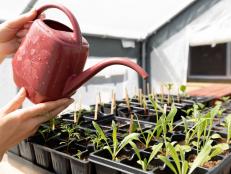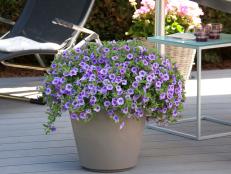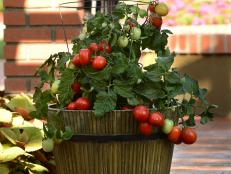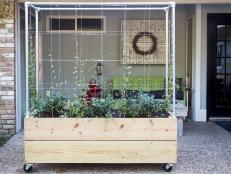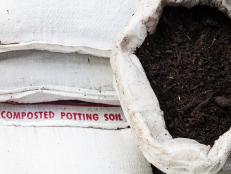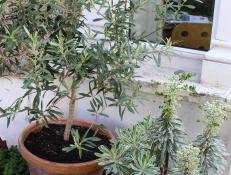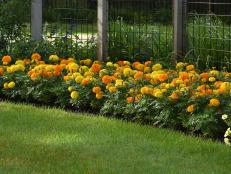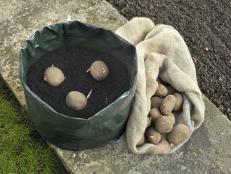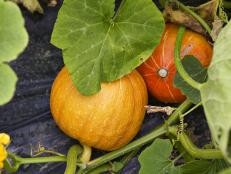Making A Pond in a Pot
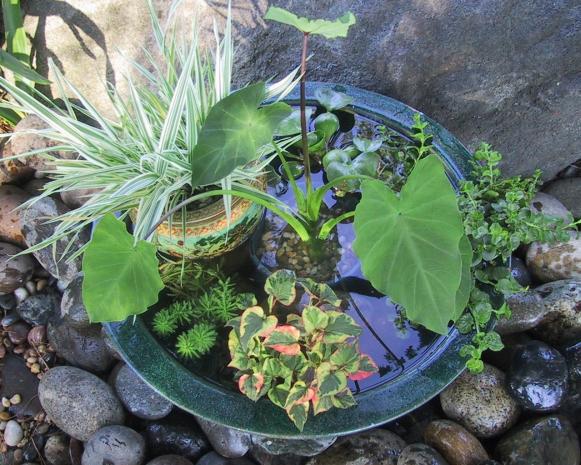
All you add is water. That's pretty much what it takes to become a successful container water gardener. Incredibly, small pots filled with water plants take care of themselves most of the time, as long as you keep adding fresh water. The plants, still in individual pots, derive most of their nutrients from the garden soil they're planted in. Can you think of a more ideal way to garden?
In truth, you do have to do a few things from time to time in addition to adding water — keep on the lookout for algae, prevent mosquitoes from using the little garden as a trysting place and scrub out the pot. But when you think of it — there's no ground to till, no weeds to fight, no need to add mulch and compost. Sounds good to me.
Water in a garden of any size creates an oasis not only for you but also for birds, butterflies, dragonflies and even small fish. Pond pots, sometimes referred to as "still pots," nestle nicely in small spaces such as balconies or decks but they can also be tucked into nooks and crannies in spacious gardens. All that's needed is a small non-draining, non-porous pot and a few water plants. A pond in a pot can be a terrific first gardening effort for children.

Selecting the Perfect Pond Pot
It's no surprise that you'll need a pot that holds water. Many pond pots are made of ceramic, plastic, sealed cement, porcelain or metal. Old crocks and wash tubs, plastic pots also make excellent pond pots.
Be creative when selecting a pot. Even an old-fashioned clawfoot tub can be adapted for a big pond-in-a-pot.
Avoid using wood containers, such as wine and whiskey barrels, as they may contain bacteria that are harmful to plants and fish. If a wood container is just what you've been dreaming of, line it with a heavy-gauge plastic bag or a pre-formed plastic liner.
The size of your pond pot depends upon the size of your space and the number of plants to be inserted into the pot. Four to five plants fill a pot that is about 16 inches in diameter and about 12 inches deep. However, even one small water plant in a corresponding decorative pot can invite harmony.
Art and Science of Water Gardens: Plant Habits and Varieties
Pond pots are created by utilizing the various types of water plants- floating leaf aquatics, oxygenating grasses, bog and marginal water plant species. They all thrive in water but have different growing habits and water depth requirements.
Floaters. Floating plants such as water hyacinth and water lettuce help reduce algae in the water garden. Water hyacinths reproduce rapidly; you may need to cull some of the plants from time to time. If you live in a warm climate, don't throw water hyacinths into open water such as canals, ponds, etc.; it's an invasive plant.
Oxygenating grasses. Most oxygenating grasses grow submerged deeply in water and either sit at the bottom of the pot or float on the water's surface. Oxygenating grasses help maintain the proper pH balance of the pond pot's water. Examples: anacharis (Egeria densa), fanwort (Cabomba caroliniana), feather grass and blood grass.
Bog plants. Water in the pond pot should just cover a bog plant's soil. That's because bog plants grow naturally in shallow water at a pond's perimeter. In a pond pot it may be necessary to set bog plants on top of rocks or small inverted pots to create a more shallow water environment.
Marginals. Marginal water plants grow 1 to 12 inches underwater in the margins of ponds, between the shore and deeper water. Marginal plants are favorites in small pond pots and usually sit at the bottom of the pot. Examples: horsetail and yellow iris (Iris pseudacorus).
Deep-water plants. Some plants like water lilies need deep water — at least one foot of a water above their roots, and they need a few square feet in which to spread their foliage. To grow one of these well, you'll want an extra large container such as a bathtub or a whiskey barrel. Water lilies help cool the water and reduce algae growth.

Location and Selection of Plants
When selecting water plants for your pond pot, consider the lighting conditions where the pond pot will reside. Morning sun or protected, partially sunny spots are optimal locations. This mild environment protects water plants from the intense heat of afternoon sun that can burn and harm the plants (and certainly threaten any fish). Tall horsetail rush, umbrella palm and floating water hyacinth are perfect partners for a partially sunny location.
The most visually pleasing pond pots are created by mixing both horizontal and vertical growing plants. Short and tall varieties simply make the display more interesting.
Try not to overstuff your pond-in-a-pot. A bit of empty water space keeps the arrangement from appearing over-crowded, and the simplicity of just a few plants lends itself to a peaceful pot, the idea behind water gardening.
Pond Pot Maintenance
Amazingly and wonderfully, a pond in a pot requires a minimum of maintenance, except, of course, for keeping it filled with water. In colder climates, you'll need to bring the pot indoors for overwintering. Depending on weather conditions and whether it's in sun or shade, a container water garden may need as much as twice-daily topping off. Use fertilizer sparingly; water plants get many of the nutrients they need from the pond water and the soil they are growing in. Water garden fertilizer is in tablet form and the tablet can be tucked into the bottom of a water plant's soil. If fish are part of your pond in a pot, make sure to go especially easy on fertilizer, as it can be harmful or even deadly to them. The fertilizer packaging gives instructions as to quantity.
There are a few chores in maintaining a healthy pond pot, but none of them will keep you busy. Algae could be your chief problem, but it needs light and nutrients to thrive, so keep some floaters on the surface to cut down on light, carefully limit the amount and type of fertilize you use, and include some submerged plants, which compete well with algae.
Every once in a while drain the pond pot. You'll know it's time when two inches of decomposed matter accumulates on the bottom of the pond pot. At this time also scrub the inside surfaces of the water pot with a stiff brush. At this time, divide the plants if necessary. If the need to divide does arise, use clay garden soil for repotting or purchase water-plant soil. This special, mud-like soil may be hard to find so plan ahead; your garden center may need to special-order it. The wonderful bonus of dividing is that now you have free plants in which to create another dazzling pond in a pot.
Some gardeners worry about mosquitoes when considering pond pots. You don't have to deprive yourself of a water garden; there are ways to conquer the little beasts. You can purchase the little "doughnuts" of Bacillus thuringiensis. Mosquito Dunks (available at garden centers) simply float in the pot. They are safe to use around children, birds, fish, dogs, cats and other wildlife. One doughnut is suggested for every 1/100 square foot of water, much larger than most pond pots. Feel free to halve or quarter the mosquito doughnut. For best protection, however, install a bubbler to keep the water in motion.
Fish and Fountains
Pond pots are susceptible to extremes in temperature and organic changes and so are pond pot fish. Allow the container water garden to stabilize for a couple of weeks before adding any fish. When you do add the fish to the pond pot, give them a break; allow them to acclimate to the water temperature slowly — float the fish in the baggie provided by the pet store. Set the baggie on top of the water for about 15 minutes (make sure the water garden is shaded during this period); then release them. A 16-inch-diameter pot can only accommodate a couple very small fish. A general rule of thumb is to allow only one to two inches of fish length for every square foot of water surface.
In the beginning feed the fish every few days with flake or granular fish food. Eventually they will feed on the pond's algae. However, if you want the fish to grow larger, feed them fish food pellets. Small gold and mosquito fish are recommended in pond pots. Gambusia, a type of fish, actually eat mosquito larvae.
It takes about two months for the water to become balanced in a pond pot. The amount of chlorine in tap water should control the algae growth, but a de-chlorinator or algae blocker (available at pet stores or water garden nurseries) will help the fish survive and slow algae growth. If algae becomes a problem, empty the water out of the pond pot and scrub the individual water plant pots and the interior of the larger pond pot. When the pond pot is reassembled, use an algae blocker and follow the quantity directions on the bottle. Oxygenating grasses also improve the water's pH balance.
Jill Slater is a garden writer and floral designer who appears regularly on Henry's Garden (KRON-TV, San Francisco).






